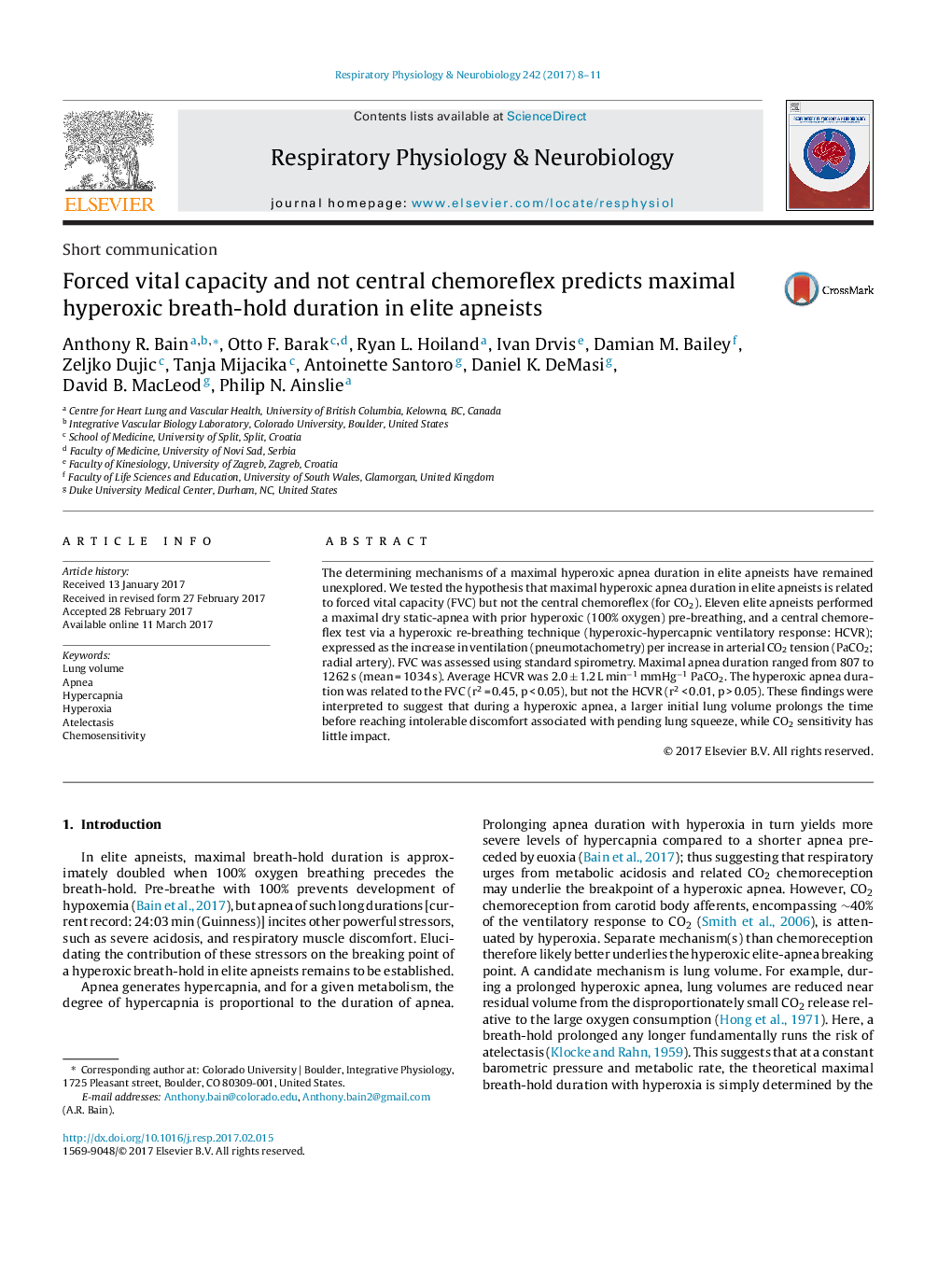| Article ID | Journal | Published Year | Pages | File Type |
|---|---|---|---|---|
| 5594125 | Respiratory Physiology & Neurobiology | 2017 | 4 Pages |
Abstract
The determining mechanisms of a maximal hyperoxic apnea duration in elite apneists have remained unexplored. We tested the hypothesis that maximal hyperoxic apnea duration in elite apneists is related to forced vital capacity (FVC) but not the central chemoreflex (for CO2). Eleven elite apneists performed a maximal dry static-apnea with prior hyperoxic (100% oxygen) pre-breathing, and a central chemoreflex test via a hyperoxic re-breathing technique (hyperoxic-hypercapnic ventilatory response: HCVR); expressed as the increase in ventilation (pneumotachometry) per increase in arterial CO2 tension (PaCO2; radial artery). FVC was assessed using standard spirometry. Maximal apnea duration ranged from 807 to 1262 s (mean = 1034 s). Average HCVR was 2.0 ± 1.2 L minâ1 mmHgâ1 PaCO2. The hyperoxic apnea duration was related to the FVC (r2 = 0.45, p < 0.05), but not the HCVR (r2 < 0.01, p > 0.05). These findings were interpreted to suggest that during a hyperoxic apnea, a larger initial lung volume prolongs the time before reaching intolerable discomfort associated with pending lung squeeze, while CO2 sensitivity has little impact.
Related Topics
Life Sciences
Biochemistry, Genetics and Molecular Biology
Physiology
Authors
Anthony R. Bain, Otto F. Barak, Ryan L. Hoiland, Ivan Drvis, Damian M. Bailey, Zeljko Dujic, Tanja Mijacika, Antoinette Santoro, Daniel K. DeMasi, David B. MacLeod, Philip N. Ainslie,
